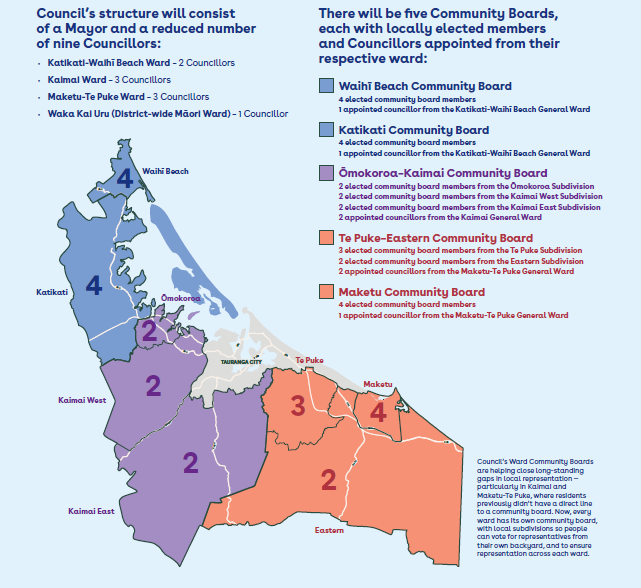Representation Review 2024
Māori Wards
Council has resolved to establish Māori wards for the 2025 local body elections. Through the Representation Review process Council approved one Maori Ward seat - Waka Kai Uru (District-wide Māori Ward).
A binding poll will also run alongside the 2025 election, giving the community the final say on whether the Māori Ward should remain in place for future elections.
What is the cost of representation?
A democratic system requires financial and other resources to make sure it works. Cost is not a key Representation Review consideration. The pay of elected members (mayor, councillors and community board members) is set independently by the Remuneration Authority. Any cost to the ratepayer remains the same regardless of how many councillors there are (but individual pay may change). Costs to the ratepayer will vary depending on if an area has a community board and the size of the ratepayer base in that area.
What are communities of interest?
When reviewing boundaries for local representation, we are required to consider ‘communities of interest’. To do this we consider three criteria:
- A sense of belonging to an area. People have things in common with neighbours and feel an affinity and shared responsibility to the area and its people.
- An ability to meet the community’s requirements for services e.g. schools, recreation, and cultural facilities.
- The ability of elected members to represent the interests and reconcile the conflicts of all its community members.
What do all these terms mean?
Representation Review: This to ensure that we retain effective and fair representation for the community. Councils are also required to review their representation arrangements every six years.
Mayor: The individual elected to lead the Council. One Mayor is elected for each Council.
Councillor: The individuals elected to represent their communities and make decisions at the Council table. A Council can have between 5 and 29 councillors (excluding the mayor.)
Community board: A group of individuals elected to represent a particular place or community.
General wards: Means a ward (area) that has been geographically identified to choose their representatives, doesn’t include Māori ward.
Māori wards: Māori wards establish areas where people who choose to go on the Māori electoral roll can vote for councillors to represent them.
At large: Means elected members can be elected on a district wide basis and voters are able to vote for the people they think are the best candidates, regardless of where they live.
General electoral population: People that live in the district but not including those on the Maori electoral population. This is based on census data
Māori electoral population: A calculation based on the number of electors on the Māori electoral roll and proportions of those of Māori descent not registered and those under 18 years of age.
Fair and effective representation: The principal that Councillors represent an approximately equal number of people.


